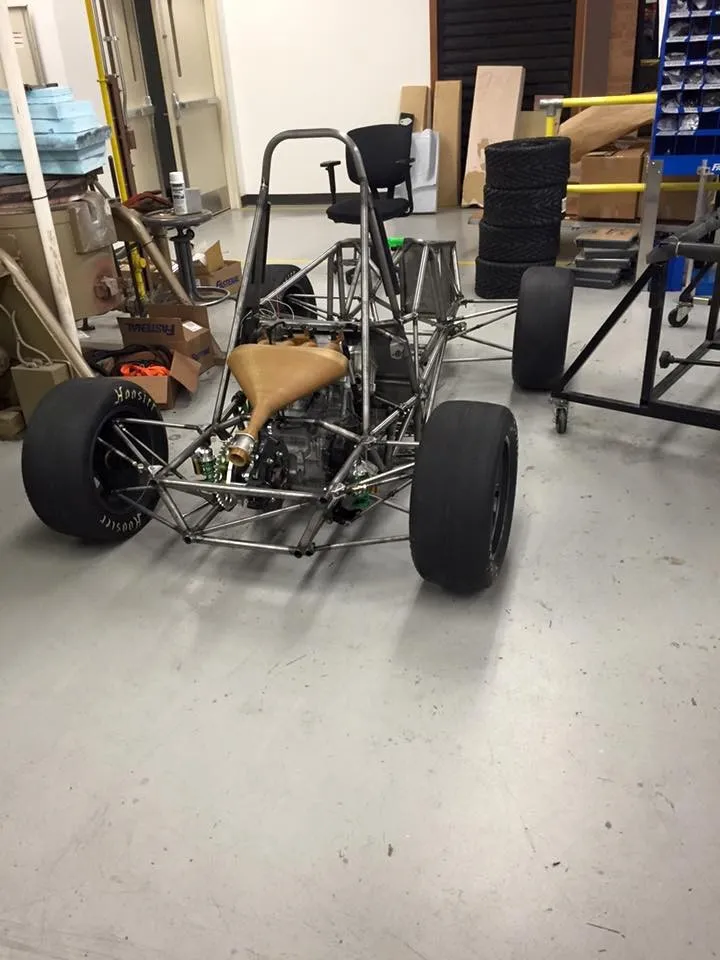Engineering Students Gain Real-World Experience in Formula SAE® Series Racing
This article was originally published on Design News.
Imagine an educational experience for budding engineers to leave textbooks and theory behind, and to design, build, and test real vehicles. Imagine those students racing their own vehicles in an intense and exciting competition against other university teams. Formula SAE Series Racing has been making this dream a reality for over three decades.
Not only do students gain real-world experience, they learn professionalism by working in a team environment under scheduling and budget constraints. This experience promotes excellence in multiple disciplines, including research, design, manufacturing, testing, developing, marketing, management, and financing.
The concept behind Formula SAE is that a fictional manufacturing company has contracted a design team to develop a small Formula-style race car. The prototype race car is evaluated for its potential as a production item. The target marketing group for the race car is the nonprofessional weekend autocross racer who race alone on the track against the clock.
All teams that enter must meet strict rules pertaining to performance and driver safety; the rules and requirements document for the Formula SAE is 182 pages long. Failure during the technical inspection means the team will not be allowed to operate the vehicle under power. Requirements include vehicle configuration, driver’s cell, minimum material requirements, main and front roll hoops, bracing, safety equipment, fasteners, and much more.
“It's a big challenge for these students,” says Dave Schaller, GoEngineer Education Account Manager and Rapid Prototyping Specialist. “They have to start in September, understand all the rules, design a vehicle that meets those rules, get the vehicle manufactured, get it assembled, test it, and make it to competition by June.”
Schaller has worked in various roles for Formula SAE competitions in the past. This year, he helped the University of North Texas’ (UNT) Mean Green Racing team get the right thermoplastic material so they could 3D print their intake manifold.
The team struggled with ECU-related issues last year. Inspired to do better in 2016, UNT’s engine team set several goals. For the intake manifold, the goal was to create an increase in runner velocity of 10%. The goal for the exhaust manifold was to create an equal runner length header of 27 inches, to create peak torque at 7000 RPM. Finally, the goal for the fuel tank was to be able to supply the fuel feed system with enough fuel to complete the endurance event while making it lighter.

“The school had a 3D printer but didn’t have the material that they knew was needed,” says Schaller. “We wanted to help the students so GoEngineer sponsored the team and 3D printed the intake manifold for them in Ultem 1010.” Ultem 1010 offers the highest tensile strength, heat resistance, and chemical resistance of any FDM thermoplastic.

The team uses SOLIDWORKS 3D CAD for car design and Flow Simulation for testing. They also regularly use Stratasys 3D printers as part of their product development process. “We like to 3D print our parts to see what they actually look like and also resolve any fitment issues,” says Justin Vincik, student and vice president of Mean Green Racing at UNT.
Additionally, the school has CNC machines, lathes, drill presses, 3D printers, welders, and more—everything needed to build their vehicle. “There are a select few things that we have to buy,” says Vincik. “But almost all the fabrication is done by the team.”

Learning how to conceive, design, build, test, and then race a vehicle is a sophisticated undertaking on many levels, and the students are grateful for industry mentors such as Schaller.
“I really appreciate what Dave Schaller and GoEngineer have done for us,” says student Reid Cloud, president of Mean Green Racing at UNT. “We especially like to show him what we have accomplished.”
This article was originally published on Design News.

About GoEngineer
GoEngineer delivers software, technology, and expertise that enable companies to unlock design innovation and deliver better products faster. With more than 40 years of experience and tens of thousands of customers in high tech, medical, machine design, energy and other industries, GoEngineer provides best-in-class design solutions from SOLIDWORKS CAD, Stratasys 3D printing, Creaform & Artec 3D scanning, CAMWorks, PLM, and more
Get our wide array of technical resources delivered right to your inbox.
Unsubscribe at any time.